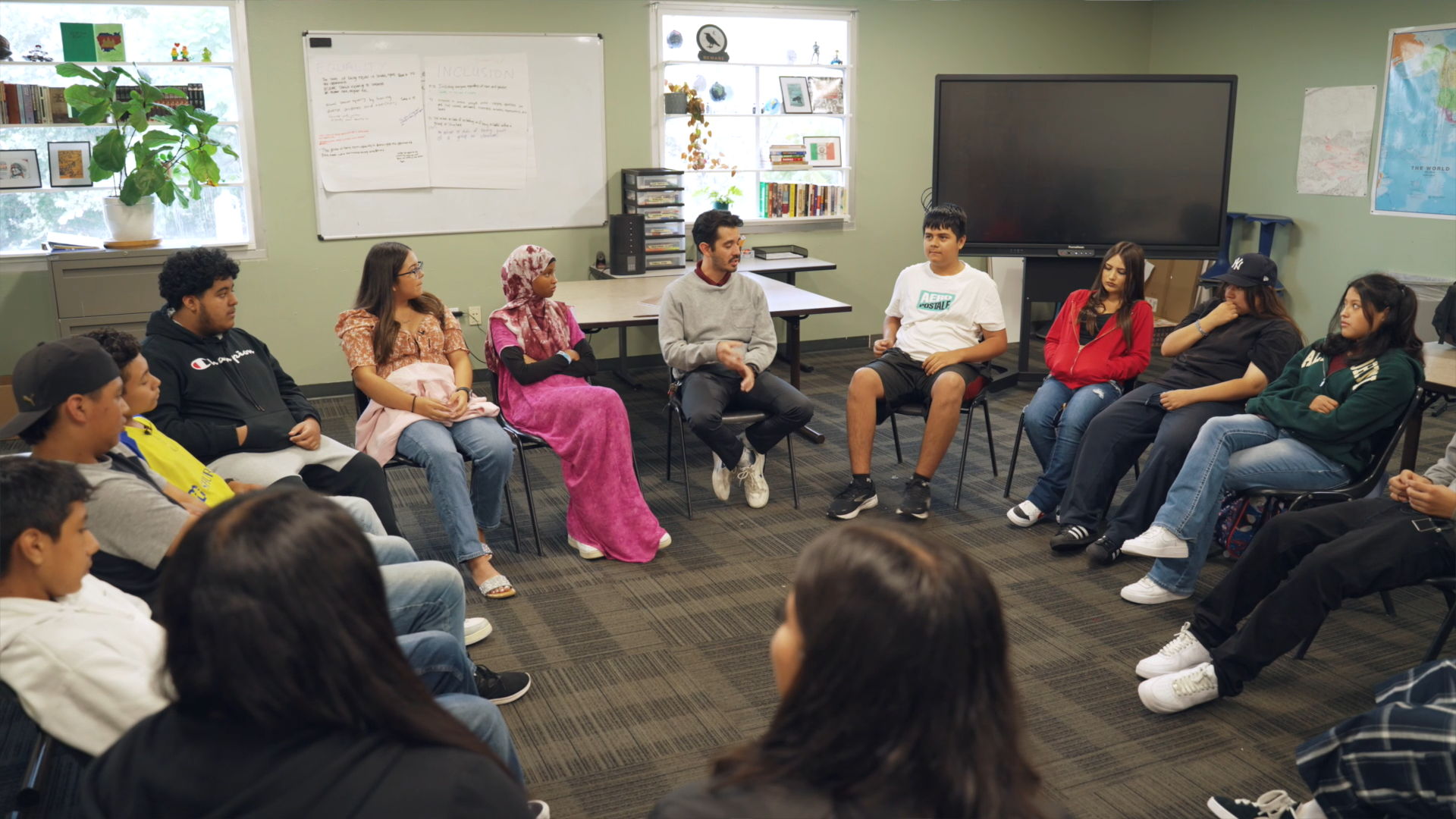“Belonging” is a fundamental human need—but not one that’s easily defined. In their latest video column for Educational Leadership’s February issue, Nancy Frey and Douglas Fisher ask, “What does it really mean to ‘belong’ at school?”
To unpack this question, Fisher and Frey gathered perspectives from both faculty and students—and their responses shed light on the profound impact that a sense of belonging can have on overall well-being.
The video opens with high school students sharing their experiences and emotions related to belonging. These students candidly express the deep impact that a sense of belonging, or a lack thereof, has on their lives at school.
“When I don't feel it, belonging, it's like a kind of a fear,” says one student. “I feel it deep down.” Another student adds, “I feel uncomfortable and isolated from everybody else…lonely.”
In the video, racial identities, cultural traditions, and sexual orientations emerge as significant factors influencing students' perceptions of belonging. As one student explains, “Every culture has a specific food and smell . . . Other kids would make comments about [food] like, ‘Why does it smell like that?’ when it actually tastes really good.”
The testimonies reveal that when students feel disconnected from or rejected by their peers, it negatively influences their perception of themselves and of their school community.
One student continues, explaining that comments about food “made me want to hide that part of myself” and that “The teachers, they were supposed to help, but it was more like they just didn’t pay attention. They just didn’t care. It was more like, ‘Oh, they’re just kids.’ That’s how I feel like they [teachers] would think.”
When students feel disconnected from by their peers, it negatively influences their perception of themselves and of their school community.
These narratives are a poignant reminder of the importance of fostering an inclusive environment that values and respects the individuality of each student. In their column, Fisher and Frey provide a detailed table describing nearly a dozen facets of belonging—like feeling welcomed, known, heard, or needed—and what schools can do to put these “dimensions of belonging” into action.
For example, to help students feel “involved,” schools might create opportunities for collaborative learning. The table also works as a metric: Involved students are those who, for instance, set goals for their learning or use academic language in conversations with peers.
Similarly, collaborating with colleagues in team meetings can help staff feel “involved,” while indicators of staff involvement might include contributing to tasks required to operate the school, such as being visible during passing periods.
Staff and students perceive “belonging” in related ways. For both groups, belonging is multidimensional and includes feeling valued, respected, and cared for as part of a group.
No matter your age or position in a school community, belonging has a profound impact on well-being.
In the second half of the video, faculty share what belonging means to them. Like their students, educators, too, experience trepidation about the degree to which they belong and whether they’ll be accepted in new situations.
“Stepping into a new role with a new team, with a new school, I had a little bit of nervousness about it, but the team made me feel welcome and accepted. Being welcomed really helped me get that sense of belonging,” says educational specialist Drew Seery.
Lesley Lopez, a student support staff member, similarly explains, “‘Involved’ resonates with me the most, considering that I’m new . . . The staff does a really good job in communication and inviting me into what’s going on in the school in general.”
But it’s not just new faculty and staff who need to know they belong. Even longtime members of school communities need to know that they are valued by others and are adding value to their communities.
“When I am needed, I feel purpose,” says English teacher Marnitta George. “I feel like I’m stepping into my ‘why,’ that I’m supporting others, and helping them find ways to be their best selves—and it helps me feel that I’m adding value to my team.”
That sense of purpose also contributes to teacher job satisfaction and retention. For Lopez, feeling involved “gives me meaning to my day and a reason to get up in the mornings.” Yves Ruelas, an ethnic studies teachers, adds, “Fostering belonging is critical to me feeling like a part of this family and to feeling like there really is this [reason] for me to stay here and to work on the things I need to work on to be a better educator for our students.”
No matter your age or position in a school community, “Every human being needs to feel a sense of belonging to their groups,” says Frey. Belonging has a profound impact on both academic achievement and well-being. As a result, “Belonging can’t be left to chance,” Fisher and Frey emphasize. “When we center it in our work, the social capital of the entire school community grows.”









